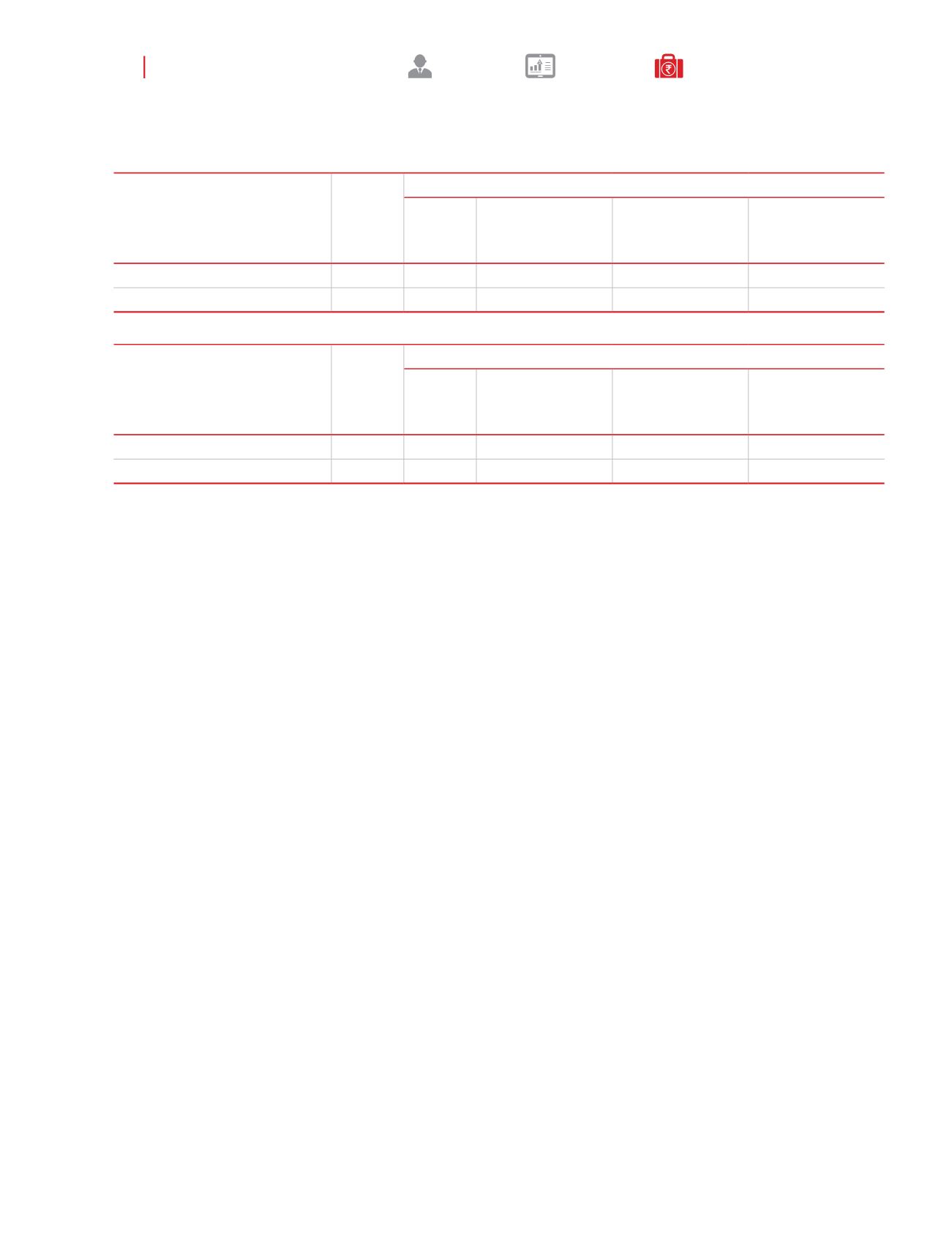

143
annual
report
20
16-17
kajaria
ceramics
corporate
overview
management
reports
Financial
statements
40. Fair value hierarchy
(contd...)
(
`
in crores)
Date of
valuation
Fair value measurement using
Total
Quoted prices in
active markets
(Level 1)
Significant
observable inputs
(Level 2)
Significant
unobservable
inputs (Level 3)
Assets measured at fair value:
Security deposits
1-Apr-15 6.56
-
-
6.56
Quantitative disclosures fair value measurement hierarchy for assets as at 1 April 2015:
(
`
in crores)
Date of
valuation
Fair value measurement using
Total
Quoted prices in
active markets
(Level 1)
Significant
observable inputs
(Level 2)
Significant
unobservable
inputs (Level 3)
Liabilities measured at fair value:
Borrowings
1-Apr-15
-
-
-
-
Quantitative disclosures fair value measurement hierarchy for liabilities as at 1 April 2015:
Valuation technique used to determine fair value:
Security Deposit and interest free loan:
Discounted Cash flow method using risk adjusted discount rate
41. Financial risk management objectives and policies
The Company’s principal financial liabilities, other than derivatives, comprise , trade and other payables, security deposits,
employee liabilities. The Company’s principal financial assets include trade and other receivables, inventories and cash and
short-term deposits/ loan that derive directly from its operations.
The Company is exposed to market risk, credit risk and liquidity risk. The Company’s management oversees the management of
these risks. The Company’s senior management is supported by a Risk Management Compliance Board that advises on financial
risks and the appropriate financial risk governance framework for the Company. The financial risk committee provides assurance
to the Company’s management that the Company’s financial risk activities are governed by appropriate policies and procedures
and that financial risks are identified, measured and managed in accordance with the Company’s policies and risk objectives.
The management reviews and agrees policies for managing each of these risks, which are summarised below.
I. Market risk
Market risk is the risk that the fair value of future cash flows of a financial instrument will fluctuate because of changes
in market prices. Market risk comprises three types of risk: interest rate risk, currency risk and other price risk. Financial
instruments affected by market risk include , deposits.
The sensitivity analyses of the above mentioned risk in the following sections relate to the position as at 31 March 2017
and 31 March 2016.
The analyses exclude the impact of movements in market variables on: the carrying values of gratuity and other post-
retirement obligations; provisions; and the non-financial assets and liabilities of foreign operations. The analysis for
contingent liabilities is provided in Note 34.
The following assumptions have been made in calculating the sensitivity analyses:
- The sensitivity of the relevant profit or loss item is the effect of the assumed changes in respective market risks. This is
based on the financial assets and financial liabilities held at 31 March 2017 and 31 March 2016.
Notes on the standalone financial statements
for the year ended 31 March 2017
















